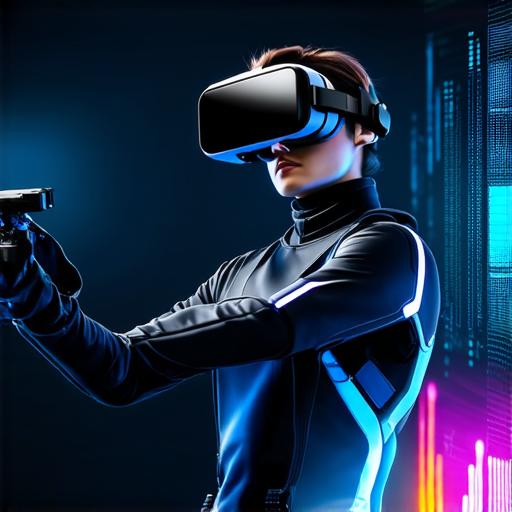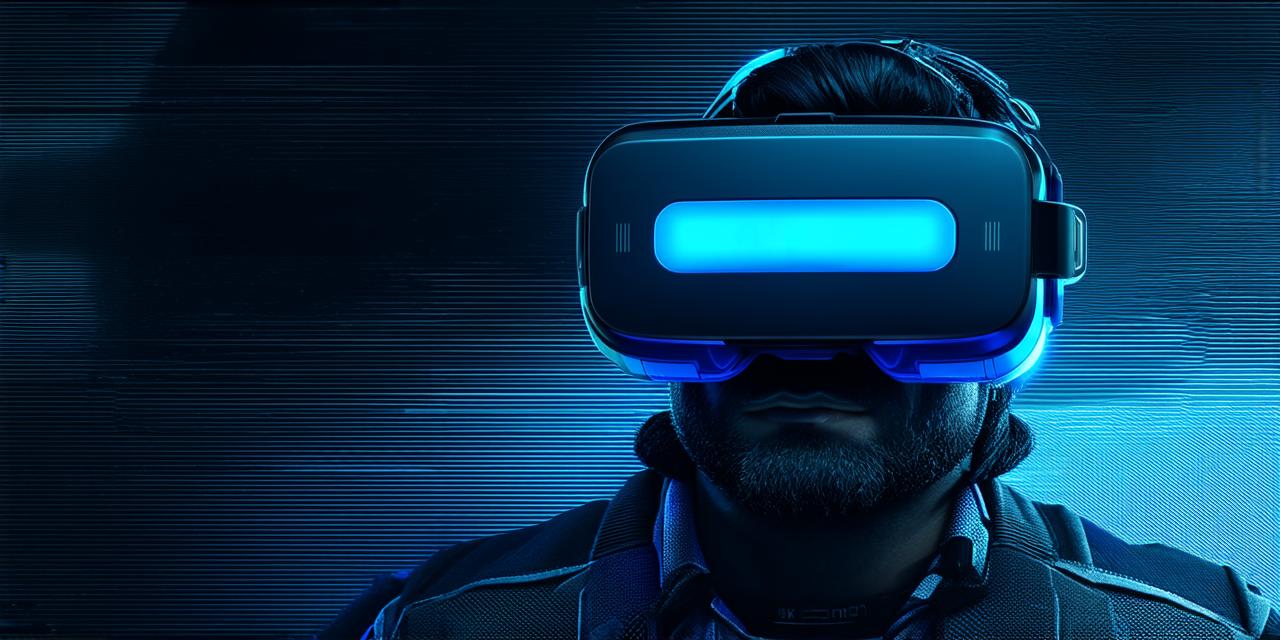Virtual reality (VR) is a cutting-edge technology that has gained significant attention in recent years. It refers to a computer-generated simulation that allows users to experience an immersive environment as if they were actually there. VR can be used for various applications, including entertainment, education, training, and therapy.
Virtual Reality: A Brief Overview
Virtual reality technology was first developed in the 1960s, but it wasn’t until the early 21st century that VR became more accessible and affordable to the general public. Today, VR is used in a variety of industries, including gaming, education, healthcare, and manufacturing.
The Benefits of Virtual Reality
Virtual reality has numerous benefits that make it an attractive technology for various applications. Here are some of the key advantages:
-
1. Immersive Learning Experience
-
2. Enhanced Engagement
-
3. Improved Training and Performance
-
4. Reduced Costs and Risks
-
5. Therapeutic Applications
One of the most significant benefits of VR is its ability to provide an immersive learning experience. By simulating real-world scenarios, VR allows users to practice skills and knowledge in a safe and controlled environment.
Virtual reality can be used to create highly engaging experiences that capture the user’s attention and stimulate their imagination. This makes VR a popular choice for entertainment applications, such as gaming and movies.
Virtual reality can be used to train employees in various industries, from manufacturing to healthcare. By simulating real-world scenarios, VR can help to improve the skills and performance of employees, allowing them to perform better in their jobs.

Virtual reality can be used to reduce costs and risks associated with traditional training methods. By simulating real-world scenarios, VR can help to reduce the need for expensive equipment and materials, as well as minimize the risk of injury or damage to property.
Virtual reality has also been shown to have therapeutic applications, particularly in the field of mental health. By providing a safe and controlled environment, VR can be used to treat phobias, anxiety disorders, and post-traumatic stress disorder (PTSD). For example, patients with PTSD can use VR to simulate triggering situations and learn coping strategies to manage their symptoms.
Case Studies in Virtual Reality
There are numerous examples of how virtual reality has been used to achieve the benefits listed above. Here are a few case studies:
-
1. Medical Training
-
2. Flight Training
-
3. Tourism
Medical students at the University of Washington used VR technology to practice surgeries on virtual patients. By using VR, students were able to simulate real-world scenarios and receive feedback from experienced surgeons. The study found that VR training was more effective than traditional simulation methods and reduced the likelihood of surgical errors.
The US military has been using VR technology for flight training since the 1990s. By simulating real-world scenarios, VR allows pilots to practice flying in different weather conditions and situations without the risk of injury or damage to equipment. The study found that VR training was more effective than traditional flight simulation methods and reduced the likelihood of accidents.
Tourists can use VR technology to explore destinations from the comfort of their own homes. For example, users can take a virtual tour of the Great Wall of China or experience the sights and sounds of Paris without leaving their living room. This not only saves time and money but also provides a more immersive and engaging experience.
The Future of Virtual Reality
Virtual reality technology is still in its early stages, and we can expect to see significant advancements in the coming years. Here are some potential areas where VR could be used:
-
1. Education
-
2. Mental Health
-
3. Gaming
-
4. Architecture and Design
-
5. Travel and Hospitality
VR technology could be used to create immersive learning experiences for students in various subjects. For example, history students could use VR to explore ancient civilizations or science students could use VR to simulate scientific experiments.
Virtual reality could be used to treat a wide range of mental health conditions, including depression, anxiety, and PTSD. By providing a safe and controlled environment, VR can help patients to overcome their fears and learn coping strategies.
Virtual reality gaming has the potential to revolutionize the way we play games. By offering users a more immersive and interactive experience, VR games could provide players with a whole new level of engagement.
VR technology can be used to create virtual models of buildings and other structures, allowing architects and designers to visualize and test their designs before they are built. This can save time and money and reduce the risk of errors.
Virtual reality could be used to provide travelers with a more immersive and engaging experience when planning their trips. For example, users could use VR to explore hotels and resorts before they book, or to take virtual tours of different destinations.
Conclusion
In conclusion, virtual reality technology has numerous applications that can benefit various industries, from education to entertainment. By providing an immersive learning experience, enhancing engagement, improving training and performance, reducing costs and risks, and treating therapeutic conditions, VR has the potential to revolutionize the way we learn, work, and play. As virtual reality technology continues to evolve, we can expect to see even more innovative uses of this powerful technology.
